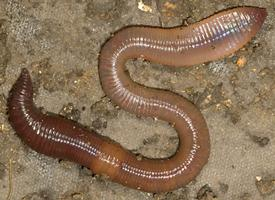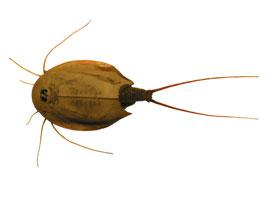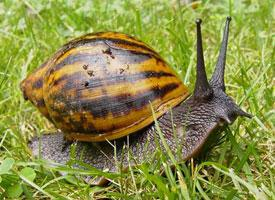
Descrierea animalului
The common earthworm, scientifically known as Lumbricus terrestris, is a species of earthworm that plays a crucial role in the ecosystem, particularly in soil aeration and nutrient cycling. These creatures are often referred to as "nature's ploughmen" or "ecosystem engineers" due to their ability to transform the soil environment, making it more fertile and conducive to plant growth.Lumbricus terrestris is characterized by its long, cylindrical body, which is segmented and varies in color from reddish-brown to a deeper, almost purplish hue on the dorsal side, with a paler underside. An adult common earthworm can grow up to 25-30 centimeters in length, although the size can vary significantly depending on environmental conditions. Each segment of the earthworm's body, except for the first and last, bears bristle-like structures called setae, which aid in locomotion and interaction with their environment.
Earthworms have a simple yet effective digestive system that begins with the mouth, located on the first segment of their body. As they burrow and feed through the soil, organic matter is ingested and then broken down in the gizzard, which grinds the material with the help of ingested soil particles. Nutrients are absorbed as the soil passes through the intestine, and the waste material, rich in organic matter and nutrients, is excreted as castings on the soil surface or within their burrows. These castings are highly beneficial to soil health, improving its structure, water retention, and nutrient content.
Lumbricus terrestris is a nocturnal animal, primarily emerging from its burrow during the night or under damp conditions to feed and mate. They exhibit a fascinating mating ritual that involves two worms coming together to exchange sperm before separately laying eggs in a cocoon. These cocoons are deposited in the soil, where the eggs develop and eventually hatch into juvenile worms.
The common earthworm's habitat is largely within the topsoil and organic matter layers of temperate and some subtropical regions. They thrive in moist, rich soils, where they can easily burrow and find abundant organic material to consume. Their presence is often an indicator of healthy, fertile soil.
Beyond their direct contributions to soil health and plant growth, Lumbricus terrestris and other earthworm species play a significant role in the broader ecosystem. They are a vital food source for a variety of wildlife, including birds, reptiles, and small mammals. Additionally, their burrowing activity helps to aerate the soil, facilitating the penetration of water and roots, and can even aid in the decomposition of organic matter, thus accelerating nutrient cycling.
In conclusion, the common earthworm, Lumbricus terrestris, is a fascinating and essential creature that contributes significantly to the health of our planet's soils and ecosystems. Its activities not only enhance soil structure and fertility but also support a diverse array of plant and animal life, underscoring the interconnectedness of all living things within the environment.
Animale similare
Fotografii noi cu animale
Top 10 animale
- Dolphin gull (Leucophaeus scoresbii)
- Diana monkey (Cercopithecus diana)
- Moustached guenon (Cercopithecus cephus)
- Galápagos tortoise (Geochelone nigra complex)
- Russian tortoise (Testudo horsfieldii)
- Japanese macaque (Macaca fuscata)
- Stone loach (Barbatula barbatula)
- Greek tortoise (Testudo graeca)
- Common flying dragon (Draco volans)
- Colossal squid (Mesonychoteuthis hamiltoni)


